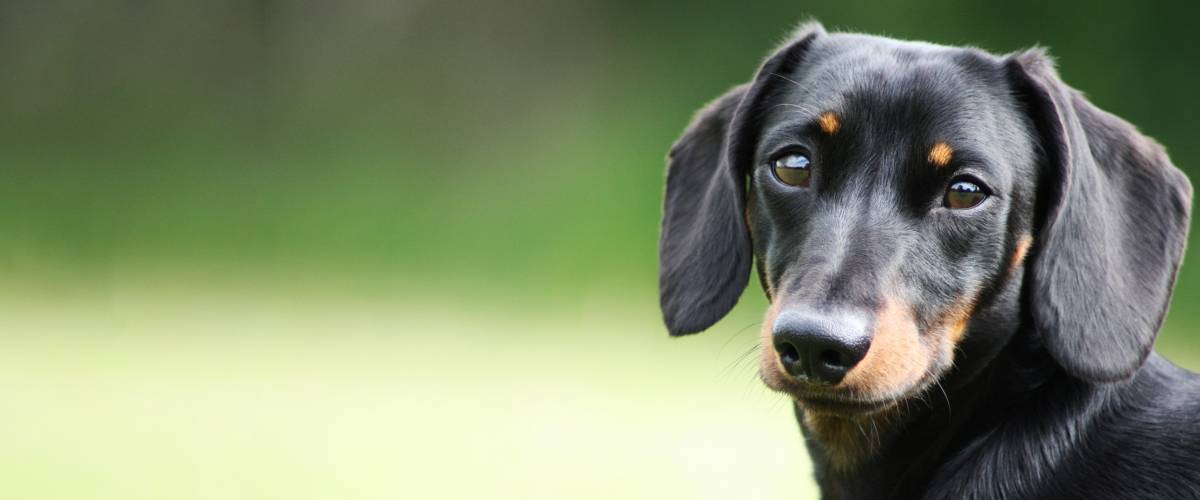
September 4, 2020 – One of the most difficult diseases to diagnose and treat in dogs is hyperadrenocorticism (HAC), sometimes referred to as Cushing’s syndrome. This challenging health issue can be a big problem for both dogs and the people who provide long-term care for them.
High-risk breeds
HAC typically affects middle-aged to older dogs and it may affect females slightly more than males. Although any breed of dog can develop HAC, the breeds reported to be at higher risk for disease include:
- Poodles
- Dachshunds
- Boxers
- German shepherds
- Boston terriers
- Beagles
HAC can take different forms, each with a different prognosis and treatment. A review of the basic anatomy and physiology of the organs involved in the disease helps explain why some dogs show certain clinical signs and others do not, and the reasoning behind different ways to diagnose and treat HAC.
Anatomy and Physiology of HAC
The key organ at the center of HAC is the adrenal gland. There are two adrenal glands, one sitting next to each kidney. Although not big in size, the adrenal glands produce many important substances that influence almost all body functions.
Adrenal glands are shaped like triangles and are divided into two main regions: the outer cortex and the inner medulla. The cortex is further divided into three zones, each producing specific hormones, many of which people will recognize.
The specific hormones produced in each region include:
- Cortex
- Cortisol – important for metabolism, suppressing inflammation and increasing blood sugar
- Aldosterone – important in sodium and potassium regulation, and blood pressure regulation
- DHEA and androgenic steroids – precursors to testosterone and estrogen
- Medulla
- Epinephrine (adrenalin) and norepinephrine (noradrenaline) – important in fight or flight, they increase heart rate, increase blood flow to muscles and brain, relax muscle in airways and help increase blood sugar
Although any area of the adrenal gland can be affected by disease, for this blog we’ll consider that a diagnosis of HAC refers to the inappropriate production and secretion of cortisol.
To fully understand HAC, it’s also important to understand how cortisol secretion is regulated.
This brings us to the last two structures important in cortisol control: the hypothalamus and the pituitary gland.
The hypothalamus and pituitary gland are both located in the brain. The hypothalamus releases a substance called corticotropin-releasing hormone (CRH) which stimulates the pituitary gland to release adrenocorticotropic hormone (ACTH) into the bloodstream, which in turn travels to the adrenal gland, stimulating cortisol release. It’s a tag-team effort.
The hypothalamus releases CRH in response to a lot of different stimuli, including low blood cortisol levels, stress, illness, physical activity and on waking from sleep. The pituitary gland also detects changes in levels of blood cortisol and can decrease ACTH release in response to either decreased CRH or increased cortisol in the blood stream.
When everything is working correctly, cortisol levels in the blood go up and down, and the hypothalamus and the pituitary gland respond accordingly to maintain appropriate blood levels. HAC occurs when this delicate balance is disrupted.
Different types of hyperadrenocorticism
HAC comes in several forms, but the underlying problem is the same with most – cortisol is produced in excess resulting in clinical signs, and causing secondary problems associated with these persistently high levels of hormone.
A few peculiar forms also exist that produce signs consistent with HAC where standard testing fails to document high levels of cortisol. This adds to the challenge of diagnosing and treating the disease.
- Pituitary-dependent HAC (PDH)
PDH is the most common form of naturally occurring HAC, accounting for nearly 85% of all cases. As the name suggests, this form occurs when the pituitary continuously secretes ACTH leading to increased secretion of cortisol. However, in PDH the pituitary doesn’t shut off ACTH production in response to high blood cortisol levels – it just keeps producing ACTH. Sometimes, the pituitary gland enlarges and begins pressing on other portions of the brain.
- Adrenal tumor HAC (ATH)
ATH is the second most common form of naturally occurring HAC, accounting for about 15% of HAC diagnoses. ATH is more common in larger dogs than PDH. In this form, an adrenal tumor develops that produces large amounts of cortisol. Although the hypothalamus and pituitary gland detect the high blood cortisol levels and shut down production of CRH and ACTH, the adrenal tumor simply doesn’t respond to the normal signals to stop production. About half of all ATHs are malignant.
- Iatrogenic HAC
Iatrogenic HAC is really common, but not something many owners might consider a disease. Iatrogenic HAC occurs when dogs are given glucocorticoids and start to develop signs of HAC. For example, many dog owners have likely used glucocorticoids to treat allergic skin disease or used steroid eye or ear drops. Glucocorticoids also are used to treat immune-mediated diseases, such as immune-mediated anemia, and they’re a cornerstone of treatment for canine lymphoma. However, some dogs can develop signs of HAC because they’re on these types of medications. The adrenal gland actually shuts down cortisol production in cases of iatrogenic HAC since blood cortisol levels are high due to the medication.
- Food-dependent HAC (FDH)
FDH occurs due to inappropriate cortisol release in response to a hormone – gastric inhibitory peptide (GIP). GIP is released by the intestines in response to eating. But for reasons not well understood, the adrenal gland responds to this normal increase by making cortisol. Once again the cortisol-producing cells stop responding to normal signals to decrease cortisol production and keep producing extra cortisol in response to GIP.
- Occult or Atypical HAC
Occult HAC is another unusual form of the disease. These patients have all the signs of HAC, but the usual diagnostic tests are normal. The mechanism responsible for this peculiar form of HAC isn’t clear.
Signs pet owners should know
Although there are lots of forms of HAC, the clinical signs noted by owners are similar across the different disease types. Dogs typically have a combination of signs although some dogs might only have one sign.
Common signs of HAC include:
- Increased thirst
- Increased urination
- Increased appetite
- Panting
- Enlarged or pendulous abdomen (stomach area)
- Hair loss
- Muscle weakness
Less common signs of HAC include:
- Fatigue and sluggishness
- Darkening of the skin
- Thin skin/easily bruised skin
- Urine leakage
- Poor hair regrowth after shaving or loss
- Calcium deposits in skin
- Neurologic signs such as stupor, dull mentation and seizures
HAC also may predispose dogs to diabetes, abnormal blood clot formation, hypertension and recurrent infections. These serious problems are another reason patients require long-term treatment to improve their survival and quality of life.
Thanks to a better understanding of HAC, many dogs are diagnosed earlier in the disease process – always a good thing. However, the early hunt for HAC can sometimes lead to conflicting test results. Even in more straight-forward cases of HAC, diagnosis often remains tricky.
How is HAC diagnosed?
There are LOTS of tests used to diagnose HAC, each with strengths and weaknesses. Routine bloodwork often will raise suspicions of HAC, but advanced testing is needed to confirm the diagnosis, and this can get confusing for owners.
Advanced/confirmatory tests – and the hows and whys behind each one – include:
- Low-dose dexamethasone suppression test (LDDST) – This test is the preferred test. In this test, a tiny dose of steroid is given and blood cortisol is measured. In a normal dog, cortisol levels will drop in response to the outside source of steroid. If cortisol levels remain elevated, HAC is a likely diagnosis. Unfortunately, sometimes inconclusive results are obtained and the test might need to be repeated.
- ACTH stimulation test – This test is used if iatrogenic HAC is suspected. A tiny amount of ACTH is given. A normal gland will release cortisol but a gland that has shut down due to oral steroids simply can’t increase cortisol in the blood. This test also is used as a complementary test to the LDDST in cases of HAC.
- Abdominal ultrasound – If an adrenal tumor is suspected, ultrasound often is helpful in making a diagnosis.
- High-dose dexamethasone suppression test (HDDST) – If the LDDST is abnormal, HAC might be suspected. But, the LDDST doesn’t always differentiate between PDH and ATH. The HDDST can help differentiate between the two, but largely has been replaced by abdominal ultrasound.
- Endogenous ACTH (eACTH) measurement – Adrenal tumors make cortisol independent of signals from the pituitary to stop production. This means that the pituitary stops making ACTH in an attempt to slow the adrenal gland’s cortisol production. It’s possible to measure the level of ACTH in the bloodstream. In a dog with signs of HAC, but a low level of eACTH, an adrenal tumor would be suspected. In cases of PDH, inappropriately high levels of eACTH would be measured.
That’s a lot of tests! And there are others that veterinarians sometimes employ, including sex hormone measurements, CT scans of the brain and abdomen, and urine cortisol levels. Your veterinarian will work with you to decide which tests (and in which order) are best for your dog.
The good news is most HAC cases eventually can be diagnosed through obtaining a good history, performing a thorough physical examination and ordering one or more advanced tests. In trickier cases, a referral to a veterinary internist may be required for additional help.
How to treat HAC
The treatment goal for any form of HAC is to minimize the signs of disease. It’s important to remember that, with the exception of iatrogenic HAC, a cure is rarely achievable. It’s all about managing the disease.
Medications are available that decrease cortisol production in the adrenal glands. The most commonly used are mitotane and trilostane. Both drugs can be very effective, but they also have serious side effects; dogs receiving these medications need careful monitoring lifelong.
In cases of adrenal tumor HAC, surgery can be effective, but mitotane and trilostane also can be used to treat this form of the disease. For food-dependent HAC, trilostane has been used to control clinical signs and both trilostane and mitotane can be used in cases of occult HAC.
Finding new treatments
HAC is a serious, common and potentially fatal disease of dogs. Gaining a greater understanding of this complex disease can help dog owners not only recognize early signs of HAC, but also be active partners in treating their dogs.
Unfortunately, not many treatments are available for patients with HAC, and those that are have potentially serious side effects. Morris Animal Foundation continues to actively support research to help improve the lives of both dogs with HAC and the owners who care for them.
The Foundation recently funded a study that is attempting to develop a cell culture system that mimics the pituitary gland. These innovative, noninvasive systems can speed up the drug discovery process. The team will use their new system to test several drugs that could alter ACTH secretion from the pituitary gland. Their goal is to find a more targeted and safer treatment for HAC and improve the quality and quantity of life for these canine patients




